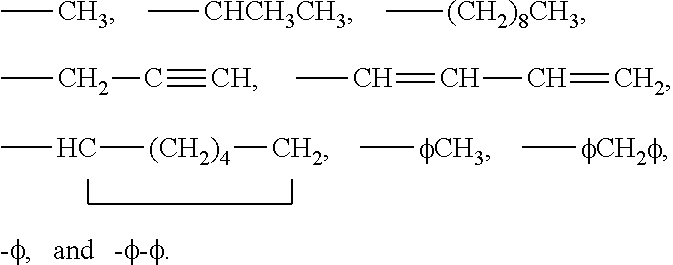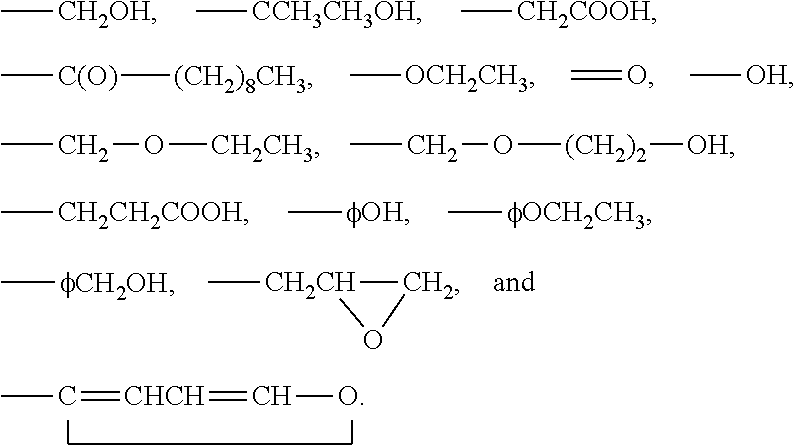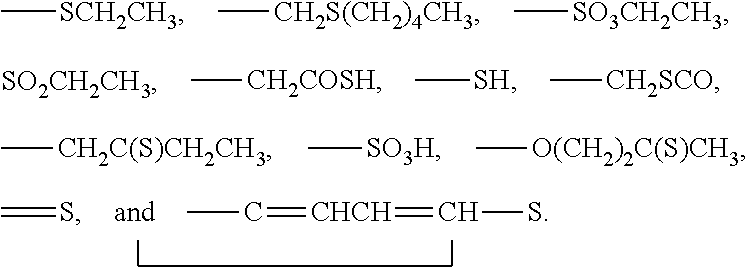Care polymers
a technology of care polymers and polymers, which is applied in the direction of disinfection, softening compositions, curling devices, etc., can solve the problems of incompatibility and stability of care polymers, and incompatible with a variety of other consumer product ingredients
- Summary
- Abstract
- Description
- Claims
- Application Information
AI Technical Summary
Benefits of technology
Problems solved by technology
Method used
Image
Examples
examples 1-2
[0237]The following are non-limiting examples of compositions that may be applied to keratinous tissue in accordance with the methods described herein.
Example12PHASE ADC-9040113.53.00DimethiconePolymethylsilsesquioxane27.54.00Cyclomethicone193.00KSG-21032.52.75Alkyl siloxane Polymer of Example 1-1544(mixtures thereof may also be used)Abil EM9740.50KF 601750.40Cetyl Ricinoleate0.25Fragrance0.100.10PHASE BGlycerin7.0010.00Panthenol1.000.5Pentylene Glycol3.00Propylene Glycol1.00Butylene Glycol1.00Tocopherol Acetate0.50Citric AcidSodium CitrateSodium BenzoateNiacinamide1.005.00Methylparaben0.200.25Benzyl Alcohol0.50Propyl Paraben0.10Disodium EDTA0.10Sodium Chloride0.50Titanium Dioxide Dispersion60.5Waterq.s to 100q.s to 100112.5% Dimethicone Crosspolymer in Cyclopentasiloxane. Available from Dow Corning2E.g. Tospearl ® 145A or Tospearl ® 2000. Available from GE Toshiba Silicone325% Dimethicone PEG-10 / 15 Crosspolymer in Dimethicone. Available from Shin-Etsu4Bis-PEG / PPG-14 / 14 Dimethicone....
example 1
[0349]To an addition funnel is added 15.43 g of poly(isobutene)-succinic anhydride (available from BASF Corp. of Florham Pike, N.J. under the trade name Glissopal®-SA,) in 143.7 g of toluene.
[0350]This solution is slowly added to a 1 L round-bottomed flask equipped with a water jacketed condenser and magnetic stir bar containing 48.75 g of aminopropylmethylsiloxane-dimethylsiloxane copolymers of amine equivalent 2000 g / mol (available from Shin-Etsu Silicones, Akron, Ohio under the name X-22-3908A-base) in 439.1 g of toluene at 90° C. This gives a 1:1 anhydride:amine stoichiometry. After addition, the reaction is cooled and stirred at room temperature. A 250.24 g sample is removed from the flask, precipitated into methanol, extracted with isopropanol, and dried in vacuum at 50° C. Polyamic acid copolymer (13.92 g) is obtained as a yellow material with 20% (by weight) poly(isobutene) as determined by H-1 NMR.
example 2
[0351]To an addition funnel is added 15.43 g of poly(isobutene)-succinic anhydride of number average molecular weight 1000 Da (available from BASF Corp. of Florham Pike, N.J. under the trade name Glissopal®-SA) in 143.7 g of toluene. This solution is slowly added to a 1 L round-bottomed flask equipped with a water jacketed condenser and magnetic stir bar containing 48.75 g of aminopropylmethylsiloxane-dimethylsiloxane copolymers of amine equivalent 2000 g / mol (available from Shin-Etsu Silicones, Akron, Ohio under the name X-22-3908A-base) in 439.1 g of toluene at 90° C. This gives a 1:1 anhydride:amine stoichiometry. After addition, the reaction is cooled and stirred at room temperature. After removing a 250.24 g sample, the reaction is brought to reflux to remove toluene / water. The reaction is then cooled, precipitated into methanol, extracted with isopropanol, and dried in vacuum at 50° C. Polyimide copolymer (19.84 g) is obtained as a yellow material with 22% (by weight) poly(iso...
PUM
| Property | Measurement | Unit |
|---|---|---|
| molecular weight | aaaaa | aaaaa |
| melting point | aaaaa | aaaaa |
| melting point | aaaaa | aaaaa |
Abstract
Description
Claims
Application Information
 Login to View More
Login to View More - R&D
- Intellectual Property
- Life Sciences
- Materials
- Tech Scout
- Unparalleled Data Quality
- Higher Quality Content
- 60% Fewer Hallucinations
Browse by: Latest US Patents, China's latest patents, Technical Efficacy Thesaurus, Application Domain, Technology Topic, Popular Technical Reports.
© 2025 PatSnap. All rights reserved.Legal|Privacy policy|Modern Slavery Act Transparency Statement|Sitemap|About US| Contact US: help@patsnap.com



